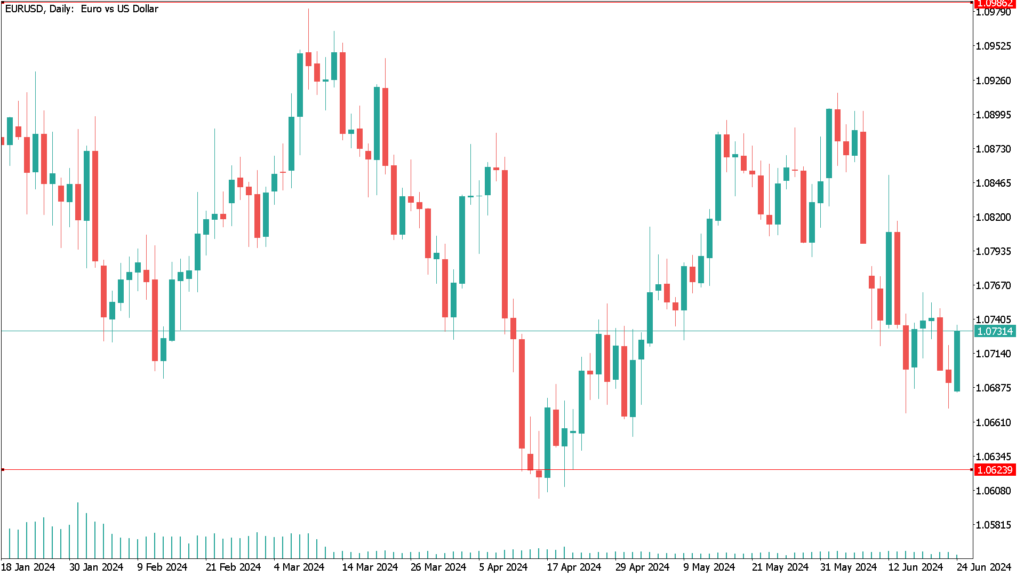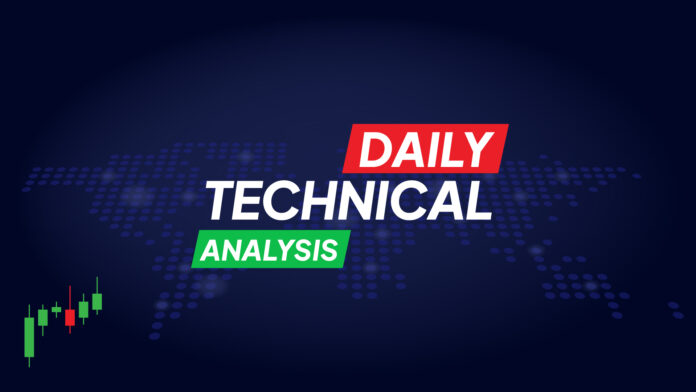The EUR/USD remains under pressure as concerns about the Eurozone economy and the future of monetary policy continue. The pair has declined for three weeks in a row.
According to the economic calendar results, S&P Global mentioned that its Eurozone PMI survey showed signs that the economic recovery was hit by a setback at the end of the second quarter. The composite PMI reading was 50.8, down from 52.2 in May and below the consensus forecast of 52.5. The manufacturing sector remained in contraction territory at 45.6.
The euro sold off ahead of the Eurozone PMI, as markets estimated the German and French PMIs, which were released 45 minutes and 30 minutes, in that order, ahead of the Eurozone-wide release. They indicated an outpouring of disappointment, as all items came in below estimates. In the 45 minutes following the German release, a significant portion of the euro was sold against the dollar.
According to S&P Global, companies reported that new orders slipped for the first time in four months, reflecting a softer expansion of activity in the business and labor sector. The European Central Bank raised interest rates in June and may be motivated to do so again in the coming months, as input cost inflation rates along with producer prices hit six- and eight-month lows, respectively. All indications are that business confidence has reached its lowest level since February.
In another aspect that will affect the euro/dollar, if he returns to the White House, Donald Trump has announced that he will impose a 10% across-the-board tariff on imports, a move that he says would raise billions of dollars to pay for further tax cuts. However, leading economists claim that the Republican candidate’s trade agenda for a second term, which also envisages raising tariffs on Chinese-made goods to 60% or more, essentially amounts to a tax hike on US households.
Regarding the future of European Central Bank policy, the danger of further inflationary shocks means that the ECB must remain flexible on interest rates, in the view of Executive Board member Isabel Schnabel. “We could be threatened by further price shocks,” Schnabel told an awards ceremony in Kiel, Germany, on Sunday. “That’s why we are on alert and have not committed ourselves in advance to a fixed rate path, but are guided by the data.”
The European Central Bank raised borrowing costs earlier this month, and while officials have signaled that it will not be the only increase, they have also offered little guidance on the speed at which rates could come down. Most have also highlighted lingering inflation risks and urged caution.
The process of reducing inflation will likely be “quite bumpy,” she said, adding, “We describe this as the tough last mile.” Schnabel also noted that, while goods inflation is decelerating rapidly, price pressures on services are proving more difficult.
According to forecasts released earlier this month, the ECB does not expect consumer price growth to reach its 2% target by the last quarter of 2025. Inflation accelerated to 2.6% in May, despite Bloomberg Economics forecasts pointing to a reading of 2.2% for June. Schnabel said, “Recent developments are moving in the right direction.” However, she added that geopolitical risks and the consequences of climate change – including recent landslides in Switzerland – are among the potential supply-side shocks.
Meanwhile, Schnabel noted that labor hoarding is weighing on labor productivity and making monetary policy transmission difficult. “Now that inflation is back, we see wage growth gradually slowing, and there are no signs of the wage-price spiral we saw in the 1970s,” she stated. She continued, “This is because we have been able to anchor business and household inflation expectations to our inflation target.” She concluded, “Businesses are starting to absorb higher wage costs into their margins.”
EUR/USD daily technical analysis for June 24th:
According to the daily chart, the general trend for the EUR/USD pair is bearish and a break of the 1.0600 support is likely, which could mean opening the door to test stronger support levels, mainly if the precautions on the European side continue to widen. On the other hand, the USD pair has been both resilient and supported by the Fed’s policy along with the economic results. On a technical level, there will be no breakout from the current trend without first reaching the 1.0830 resistance level. In addition, the euro will be affected today by the German IFO business climate index.




